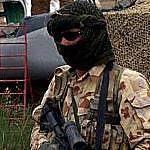I've been doing a bit of research into the actual sourcing of the new Fleet of MTB's as part of the Land 907 project.
Here are some details and info to consider in specifying a MBT for the ADF as documented in the actual Auditor General's report 2007 -2008 on the current acquisition:
1. The prefered tank must be a production model with known operating and maintenance costs.
2. Interoperability is an important requirement for these tanks ie:
Ability to operate with an international coalition for tasks that support the wider interests, including the ability to operate with current and future US forces.
Ability to remain capable of operating within and potentially leading coalitions involving neighbours and regional partners
The core business of the Australian Army is to conduct close combat against an enemy using combined arms teams. A combined arms team is made up of infantry, armour, artillery, engineers and army aviation. Within this formation the tank plays a central role providing protection, communication and firepower.
In the actual project 3 platforms types were considered:
Leopard 2 and Leopard 2 variants
Abrams variants
Challenger 2
The Abrams acquisition was recommended over the other options basically on the basis of it's proven survivability and cost. Government approval for the project to purchase the Abrams M1A1 AIM was given in March 2004.
In the end two contenders emerged as preferred options to replace the AS1 Leopards, The Abrams above, and the Swiss RUAG PANZER 87/WE.
Challenger 2 was discounted because it was far more expensive than any of the other options ( twice that of the Abrams).
Leopard 2A4, 2A5, and 2A6 were not considered as competitive in terms of operational capability as " these would have been supplied as aging and second hand tanks of lesser capability" (NB: the Auditor Generals report assesses that this decision was made in the absence of an approved functional performance specification, and was by its nature subjective.)
This 'What if ?' scenario assumes that the Leopard 2A6 was chosen as it was the best in terms of operational capability, and that it was cost competitive. However that should be kept in mind in "specing" the beast. Adding too much cost to the tank will make it unfeasible and unaffordable.
Common specifications must be used where possible and the tank must be able to fulfill the Australian Arrmy's core business of combined arms. This tank does not need to be a 'technological wonder' (eg: PSO) so some of the 'you beaut' stuff does not need to be included in the final specification of this tank. It needs to be a good honest machine that fullfils the needs of the RAAC.
Some of the modifications made to the Abrams were:
A mobile camouflage system
A cooling system similar to the Leopard Crew Climate Control System
Steyr mounts for Aussie small arms.
Heat reflecting insulations, umbrella & internal cool air vests
I'll also need to think about these.
Thoughts ?
BTW here is the link to the report above (good reading if you're interested in how these decisions are made):
http://www.anao.gov.au/uploads/documents/2007-08_Audit_Report_1.pdf
In the end the correct decision was probably made (based on requirements). But This is all about building an Aussie Leo 2A6

Cheers
Paul








































